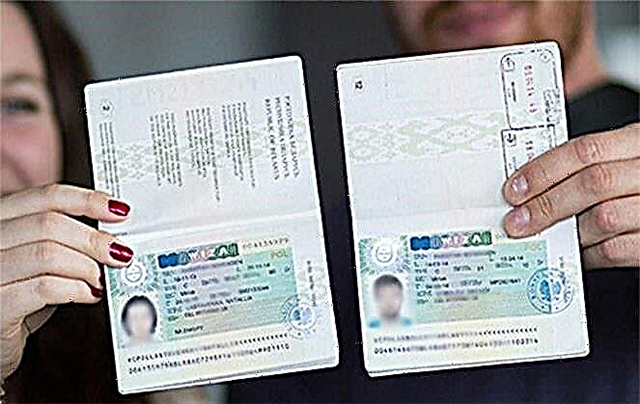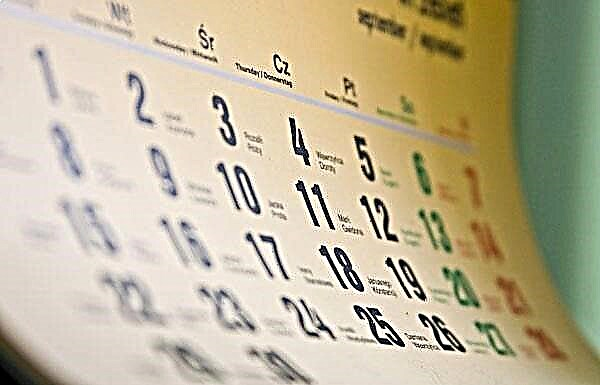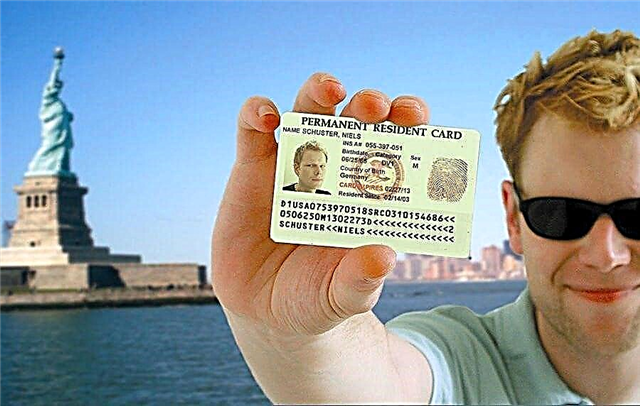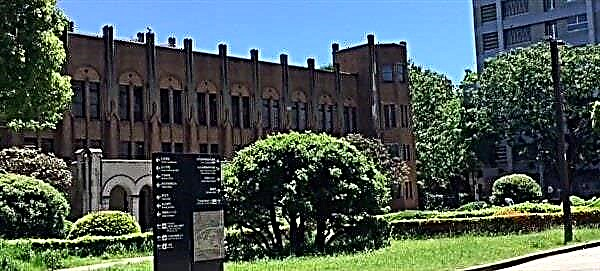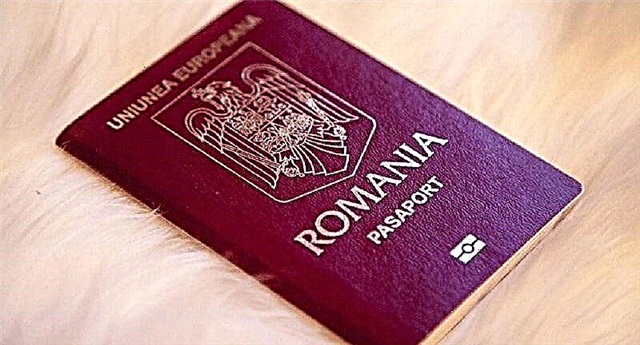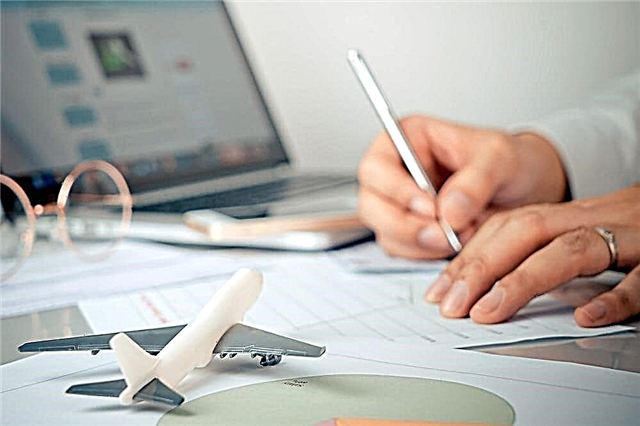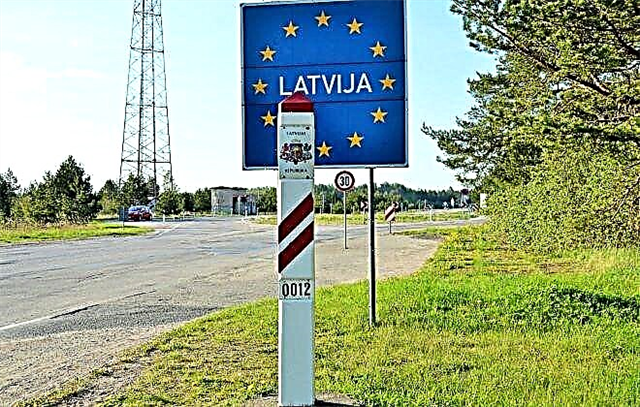Latvia has golden beaches and historic castles, interesting festivals and many business opportunities to its guests. Not surprisingly, hundreds of thousands of Russians cross the country's border every year. Nevertheless, being a full-fledged member of the EU and Schengen, Latvia has established rather strict rules of entry. Therefore, when preparing for a trip, it is worth finding out how the Latvian border is arranged and what are the basic rules for crossing it in 2021.

Location of checkpoints
Latvia is a member state of the Schengen Agreement, therefore it is necessary to cross its border in accordance with the requirements: for citizens of the Russian Federation with a visa.
As of 2021, there are four checkpoints for vehicles on the Russian-Latvian border. It is convenient to estimate their location using a map:
- As you can see from the above map, the closest of them when traveling from Moscow is Burachki-Terekhovo, marked with the number 1. It is located on the European route E22. From the side of the Russian Federation, it is connected with the M9 “Baltia” highway passing through Moscow, Volokolamsk, Rzhev, Velikiye Luki and Novosokolniki. After the checkpoint, the road turns into the Latvian highway A12, on which Jekabpils, Rezekne and Ludza are located. Usually, this point is the busiest of all located on the border of the Russian Federation with the Baltic country.
- The border crossing Ubylinka – Grebnevo, designated by the number 2, is located between the Russian road 58K-306 (Ostrov – Vyshgorodsk – Ubylinka) and the Latvian motorway A13, which is part of the Euro route E262 and follows from the border through Rezekne, Daugavpils and is located on the border with Lithuania Medumi. Please note that the road leading to this checkpoint from the Russian Federation is a toll road, the fare on it is 300 rubles (paid at the Russian international automobile checkpoint (MAPP). It is through the checkpoint that cars coming from Pskov usually follow.
- The Ludonka-Vientuli checkpoint on the map is marked with number 3. From the Russian side, access to it is possible only by road 58K-530, which is a small branch of the road 58K-326. The nearest Russian settlements are Pytalovo and Nosovo. The workload of this point is usually lower than that of Terekhovo, but higher than that of the rest. On the Latvian side, a local road departs from this checkpoint and merges into the regional road P45. On it you can get to Vilaka and Balvi, and also gradually go to the A2 highway, leading to Riga and Jurmala.
- Finally, the last of the existing crossings, Brunishevo-Pededze, is marked with number 4 and is located between the Russian road 58K-339 and the local Latvian road through which you can get to the A2 highway. This checkpoint is located closest to St. Petersburg. Please note that both from the Russian Federation and from the Baltic country, unpaved roads approach it.
Residents of the southern and central regions of Russia can also travel to Latvia through Belarus. The easiest way to do this is through the Grigorovshchina checkpoint, the location of which is indicated on the map:

Through this passage, located near Bigosovo, one can get to the Latvian A6 highway leading to Kraslava, Daugavpils and Riga.
Just keep in mind that sometimes the Belarusian customs are stricter than the Russian ones, so you should first study the rules for crossing the border of Belarus and the procedure for declaring values.
For residents of the Northwest region, it is also possible to travel through the territory of Estonia. If you want to enter Latvia through Belarus and Lithuania, then it is best to use the Privalka point:

Both options of travel through Belarus save time if you are traveling with a child under the age of three: according to Belarusian customs regulations, cars with such children pass checkpoints without queuing.
A lot of useful information about transit travel can be found in the article “Transit visas of foreign countries”.
Car queue at the border
There is an intensive freight traffic between the Russian Federation and the Baltic States, so at many checkpoints there are often queues consisting mainly of fuel trucks (carrying fuel to the Baltic countries) and trucks (carrying goods from the EU to the Russian Federation).
Quite often, in the queues, you can find in large quantities and cars of local shuttle residents, making money on the resale of Russian goods in the EU and vice versa. Because of this, the average travel time through the crossings fluctuates between 1 and 12 hours, especially if you move on a first come, first served basis.
On New Year's Eve and other holidays at Burachki and Brunishevo, the average queue time is more than 5 hours.
Of the amenities near the checkpoint, you can only find dry closets, but accommodation and food can be a problem. Therefore, when choosing a point and time of travel, it is worthwhile to first study the current situation at the state border using the official website of the Latvian customs - vid.gov.lv.
When preparing to leave the territory of the Baltic country, you can also order a summary of the queues by sending the word BORDER to number 157. This service costs 21 euro cent, which will be debited from your mobile account.
An online camera will help to monitor the state of checkpoints on the part of Belarus.
Unfortunately, unlike the Lithuanian and Estonian state borders, the electronic queue at the Russian-Latvian border as of 2021 has not been created - and this despite the fact that back in 2021, the Latvian Seim instructed the Ministry of Transport to start work on its creation, to solve the problem of many kilometers of trucks.
 Fortunately for ordinary tourists with cars with Russian license plates, at all checkpoints from the Russian side, you can negotiate with the drivers of fuel trucks and drive past them, taking a seat in a separate "passenger" queue. But the move by the EU in any case will have to take place on a general basis. Moreover, an attempt to buy someone else's place can result in a fine of 200 euros.
Fortunately for ordinary tourists with cars with Russian license plates, at all checkpoints from the Russian side, you can negotiate with the drivers of fuel trucks and drive past them, taking a seat in a separate "passenger" queue. But the move by the EU in any case will have to take place on a general basis. Moreover, an attempt to buy someone else's place can result in a fine of 200 euros.
For truck drivers, from 2021 at the Terekhovo and Grebnevo checkpoints, a queue reservation at the Latvian-Russian border has been in effect. It was organized by the joint efforts of police and customs officials. Unfortunately, it has been organized so far in offline mode: customs officers are engaged in issuing numbers.
Please take a sociological survey!
When is it possible to skip the line
Truck drivers in cases stipulated by the Resolution of the Cabinet of Ministers of Latvia "On goods transported out of turn" dated 13.03. 2021 No. 170, can cross the border without queuing. These include:
- live farm animals (cows, horses, birds, etc.);
- fresh, chilled, frozen, smoked meat;
- fish (whole frozen or cut);
- shellfish and other seafood;
- bird eggs;
- milk and dairy products;
- flowers and other plants, live and cut;
- vegetables, fresh and frozen;
- fresh and frozen fruits and berries;
- ice cream;
- frozen prepared food;
- human and animal organs for transplantation and other medical purposes;
- human and animal blood for transfusion;
- medications containing insulin;
- drug-coated dressings (eg, adhesive tape);
- periodical press (magazines and newspapers), published at least 4 times a week;
- tar;
- concrete;
- weapons and ammunition (subject to transportation with armed guards).
Also, circuses pass without queue during the tour.
In order to take advantage of this opportunity, you need to contact a border guard officer and present documents for the cargo you are transporting.As a result, you should receive a coupon for an extraordinary border crossing, which will indicate the current date, time of issue of the document, the number of your car and the number of the customs document.
You will also present this coupon to the customs officer along with documents for transport, cargo and other papers necessary for travel.
Basic requirements for transport
The established rules for entering Latvia by car in 2021 impose the following basic requirements on a car:
- good technical condition of the transport;
- the presence of valid seat belts on all seats;
- lack of anti-radar system;
- the level of tinted windshield does not exceed 25% (for other glasses - no more than 30%);
- the car must have a fire extinguisher, a first aid kit, a tow rope, an emergency stop sign and a vest with reflective elements.
If you are traveling with a child, there must be a child car seat in the car.
In winter, many Russian motorists have a question whether it is possible to enter Latvia on studded tires. So, unlike most other EU countries, the use of thorns in the Baltic States is not prohibited. However, the period of their use is limited to the period from November 1 to April 9.
If the snow cover persists, the period of permitted use of studs is extended by a separate decision of the Ministry of Transport. Attempts to drive with studded tires while prohibited are fraught with:
- a request to change tires;
- the proposal to cut the spikes from the tires;
- a ban on entry.
 Contrary to the widespread misconception, entry to Latvia with the 82nd region (Crimea) with car numbers in most cases does not cause any difficulties. Entry with such a number to the territory of the European Union is not formally prohibited, and most customs officers have no questions about it. Although the position on non-recognition of Crimean tourists has already been repeatedly expressed by diplomats of the Latvian mission, as well as of many other countries.
Contrary to the widespread misconception, entry to Latvia with the 82nd region (Crimea) with car numbers in most cases does not cause any difficulties. Entry with such a number to the territory of the European Union is not formally prohibited, and most customs officers have no questions about it. Although the position on non-recognition of Crimean tourists has already been repeatedly expressed by diplomats of the Latvian mission, as well as of many other countries.
After crossing the border, it is worth remembering that when traveling between cities, the dipped beam must be turned on. Speed limits are 50 km / h in the city and 90 km / h behind it, and they can be painlessly exceeded by no more than 10 km / h.
Documents required for travel
Having prepared the car for the trip, it is worth finding out what documents are needed to travel to Latvia. The list of personal documents includes:
- national or Schengen visa;
- a valid foreign passport with a validity period that expires no earlier than 3 months after the end of the trip;
- medical insurance policy with coverage of at least 30 thousand euros;
- confirmation of the availability of a place of residence;
- confirmation of financial security for the entire duration of the planned trip at the rate of 30 € on the day of the trip.
If you are traveling with children under the age of 14, they must be entered in your passport or have your own. Older children must have separate passports. If only one parent is traveling with the child, permission from the other may be required.
The following papers must be issued for the car:
- technical passport and registration certificate;
- European insurance policy (green card) valid in all EU countries;
- driver's license and international driver's license (or new Russian license issued after 2021).
If you are not the owner of the car, you will need a notarized power of attorney from its owner. Most often it is checked when leaving the Russian Federation.
If your car rolled off the assembly line earlier than 3 years before entry, you will additionally need a diagnostic card. In the absence of her, you may be denied entry. Moreover, if you are traveling on a single-entry visa, then it will be considered canceled and you will have to apply for a new one.
Only companies that are members of the Russian Union of Auto Insurers have the right to issue diagnostic cards. You can check the selected company on the PCA website - autoins.ru.
Please note that if you decide to go by car to Latvia with a dog, you will additionally need the following documents for your pet:
- an international veterinary passport, in which the roots of all vaccinations must be glued in, including those made no earlier than 12 months, and no later than a month before the date of entry;
- a veterinary certificate confirming that the animal does not suffer from dangerous diseases.
Also, the dog must be microchipped, while the information on the chip and in the veterinary passport must be in full compliance.
To obtain a veterinary certificate, you must first issue a veterinary certificate (form 1) at any state veterinary clinic, and then obtain a certificate (form 5a) at any branch of the Rosselkhoznadzor. These documents will be required when leaving the Russian Federation.
At the entrance to Latvia, you will be asked instead of the EU regulation 576/2016, which any veterinarian working in a public clinic has the right to prescribe.
In addition to documents, for entry, you will need a carrier adapted for transporting animals in a car.
Entry procedure to Latvia
 In 2021, the following procedure was established for crossing the border by car:
In 2021, the following procedure was established for crossing the border by car:
- Prepare in advance all personal documents and papers for the car and cargo (if any), driving up to the border service post;
- get a mark of crossing the border from a border guard officer;
- choose the green corridor (if you do not have goods and values subject to declaration with you) or the red corridor (if any). In case of doubt, you should always use the red corridor, otherwise there is a risk of getting a ban on entry;
- stop the car, turn off its engine and let the customs officers carry out an inspection.
Be polite with customs and border guards: nervous or overly impudent behavior will attract unwanted attention and lead to in-depth checks that can take a long time.
To return to Russia, you will have to go through the procedures in the same sequence.
How e-customs works
Recently, all EU countries have been trying to implement electronic document management as much as possible, and it is the Baltic countries that have become the headliner of such changes. Therefore, a unified electronic customs system has been introduced in the country, called EMDAS, which consists of the following modules:
- IKS, which is responsible for import control. In it, you can fill out a preliminary declaration of imported goods;
- EKS, which controls exports and offers the possibility of filing a declaration for the goods that you plan to export from the country;
- TKS, in which the submission of transit declarations is organized;
- MAN / PU, allowing the filing of cargo manifests for air transport and a declaration of temporary storage of goods.
All modules are accessed through a single Internet portal - https://eds.vid.gov.lv/login/.
You can register in the system in several different ways:
- through the Latvian public services portal - latvija.lv;
- using the electronic identifier eID, which can be obtained from the Office of Citizenship and Migration;
- using an electronic signature, which can be obtained at the Latvian State TV and Radio Center;
- using the EDS ID, which is created directly on the e-customs website - https://eds.vid.gov.lv/login/.
Complete instructions for registering and using the system can be found on the website of the customs service.
EORI code - who needs it and why and how to get it
If you are the owner of a company planning to carry out export-import operations with Latvia, you need to obtain EORI - a single European customs identifier. To do this, you need to register your company in one of the EU countries and send a corresponding application to its customs authorities.
This document will need to indicate:
- invoice or contract for the supply of goods;
- information on the composition and value of the cargo;
- planned delivery method and date;
- information about carriers.
Within 3 working days you will receive an EORI code, which will be used in document flow with customs authorities.
Rules and limits for the import and export of goods
Without paying customs duties, each guest of the country has the right to bring with him:
- personal items (clothes, gadgets, books, etc.) in quantities that do not raise doubts among customs officers about their purpose;
- medicines for personal use with prescriptions;
- up to 40 cigarettes (or 20 cigarillos, 10 cigars or 50 g of tobacco);
- up to one liter of strong (more than 22%) alcohol;
- up to 2 liters of wine (any, but not stronger than 22 degrees);
- up to 16 liters of beer;
- up to 10 kg of coffee or tea;
- no more than 50 g of perfume or 250 g of cologne / eau de toilette;
- up to 10 liters of gasoline or other petroleum products in cans (the volume of the gas tank is not included in the limit);
- up to 20 kg of fish or crustaceans;
- up to 2 kg of honey and bee products, as well as shellfish, baby food and pet food;
- no more than 10 kg of confectionery or pasta, as well as other food products not prohibited for import;
- gifts, souvenirs and other goods for a total amount of not more than 300 euros for adults and 200 euros for minors.
There are no special restrictions on the export of any goods from Latvia.
Lovers of “Riga Balsam” are often interested in how much alcohol can be exported from Latvia. Here the question rests on the Russian customs rules, which state that up to 3 liters of alcohol can be imported without paying a duty.
In total, you can import no more than 5 liters of alcohol, while for 2 liters above the duty-free rate, you will have to pay about 44 €.
The rules for the import of goods into Belarus are not so strict: there is only a general restriction on the weight of the cargo (up to 50 kg) and its cost (up to 1,500 €).
Just in case, just before the trip, it is worth checking the current restrictions online on the official website of the customs.
Prohibited goods
 When preparing for a trip, it is worthwhile to find out in advance what cannot be brought into Latvia. The list of goods prohibited for import without special permission includes:
When preparing for a trip, it is worthwhile to find out in advance what cannot be brought into Latvia. The list of goods prohibited for import without special permission includes:
- meat and dairy products;
- Salo;
- canned food, animal feed, baby food and prepared meals containing meat or milk;
- parrots;
- fruits;
- Natural flowers;
- weapons and ammunition;
- hazardous substances (poisons, radioactive substances, explosives, aggressive chemical reagents);
- narcotic drugs;
- cultural, artistic or historical values.
The same list applies when leaving the country.
The procedure for declaring money
Cash amounts exceeding the equivalent of EUR 10,000 are subject to obligatory declaration.
Cash is considered as banknotes and coins in any currency, as well as traveler's checks, payment orders and bills of exchange (including signed, but not completed).
In order to fill out the declaration, it is enough to select the red corridor at the checkpoint and fill in the received form. You can even download it in advance from the official customs website.
If you plan to continue your trip to Europe, you do not have to fill out a declaration at the border of other EU countries.
Sanctions for violation of customs regulations
Violation of visa legislation in all cases turns into a ban on entry. Moreover, even if you do not immediately get blacklisted, be prepared for more diligent than usual checks when applying for a new permit.
The import of undeclared values is fraught with their complete confiscation, as well as the imposition of a fine, which for individuals ranges from 70 to 700 €, depending on the volume of goods. Legal entities will have to pay from 700 to 7 100 €.
For an attempt to import undeclared amounts of cash in excess of the maximum allowable, a fine of 5% of the imported amount is imposed.
An attempt to illegally import goods on an especially large scale may even result in the confiscation of a vehicle. Outright attempts to smuggle cigarettes and other goods (when large consignments are transported in secret compartments of a car or inside other items) can face a much larger fine (up to 20,000 euros) or criminal prosecution. Sometimes it even turns into imprisonment for up to 5 years.
Please note that non-compliance with the legal requirements of border guards and customs officers can also be punishable by a fine or even administrative arrest.
Finally, it should be borne in mind that the maximum allowable alcohol level in the driver's blood, according to EU standards, is 0.5 ppm, and exceeding it is fraught with a fine from 430 to 1,300 € and deprivation of a driver's license for up to 2 years.
So that your journey does not end on a sad note, do not forget that the customs rules of Russia differ from those of the EU. In particular, it is worth studying the list of sanctioned products prohibited for import and not trying to import them from Latvia.
Common travel routes
Considering the relatively large number of checkpoints and their wide geography, many drivers have a question about where it is better to cross the border with Latvia by car.
When traveling from Moscow, it is best to leave in the direction of Volokolamsk. Then you will pass Rzhev and find yourself in Velikiye Luki, from which it is quite easy to drive to the M9 highway. The road to the checkpoint in this case will take about 8 hours.

From St. Petersburg it is worth going to the Brunishevo checkpoint through Pskov. This trip will take about 6 hours.

In the country itself, the most interesting places to visit are Riga with its historical castles and shopping, Jurmala with its beaches, Rundale Palace near Bauska or the Livonian Order Castle in Ventipils. Such an educational route leaving St. Petersburg will look like this:

If we exclude Bauska from the trip and drive the country in a straight line from east to west through Riga, Jurmala and Ventipils, then the whole journey may take no more than two days. And if you include Daugavpils in the route, then you can visit several interesting museums, including the Museum of Moonshine.
Lovers of architecture will appreciate the trip Ludza – Madone – Riga, because in Ludza you will be greeted by a historic church, and in Madona by the estate of Barons Marciena.
When planning your trip on your own, keep in mind that entering Jurmala by car during the tourist season costs 2 euros.
How much will the trip cost on average?
The main factors affecting the cost of the trip will be:
- consular fee for a visa (35 €);
- current expenses in the country (from 40 € / day);
- the cost of fuel (1 liter in the country costs 1.10 euros).
With an average fuel consumption of 5 l / 100 km (which is typical for modern cars), only gasoline for a trip from Moscow to Riga (920 km) and back will cost 100 euros. If you want to travel from Moscow to Ventipils (1100 km) and back, be prepared to pay more than 120 € for fuel.
If you fill a full tank in Moscow at prices of about 0.7 € / liter, the trips will cost you significantly less: 65 euros (Moscow – Riga) and 77 euros (Moscow – Ventspils).
Conclusion
The rules for entering Latvia differ little from the standard for most other EU countries. When preparing for a trip, you should clarify the situation at the crossing points in advance, check that all the necessary documents are available and that your car complies with the requirements of Latvian legislation.
Attempts to import undeclared goods are fraught with their complete confiscation and a fine of up to € 20,000. Returning home, do not forget about Russian customs regulations.


